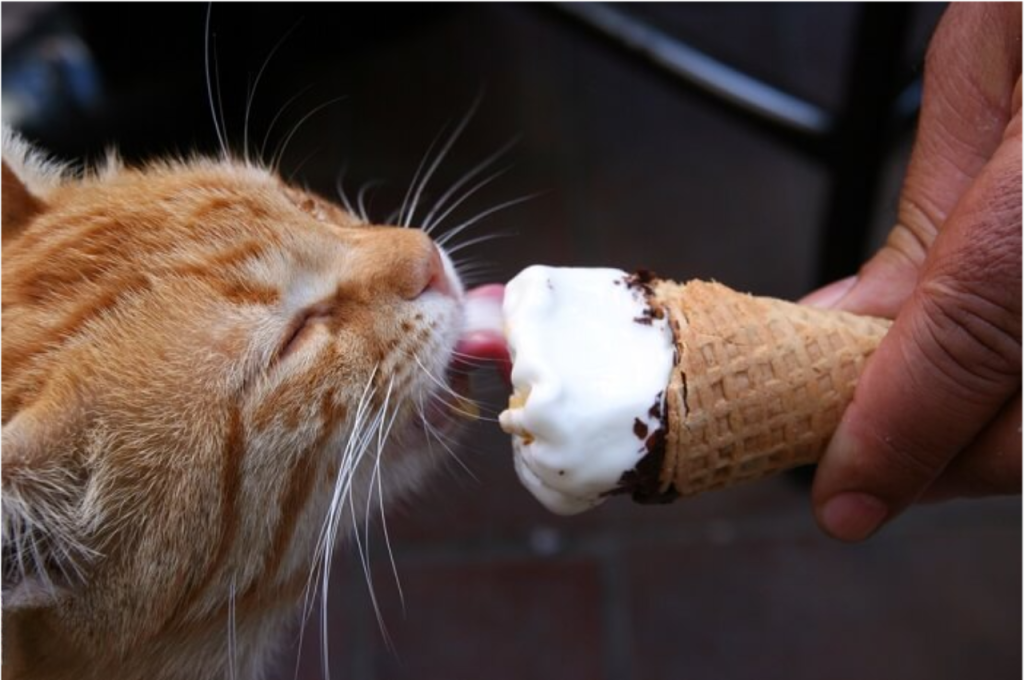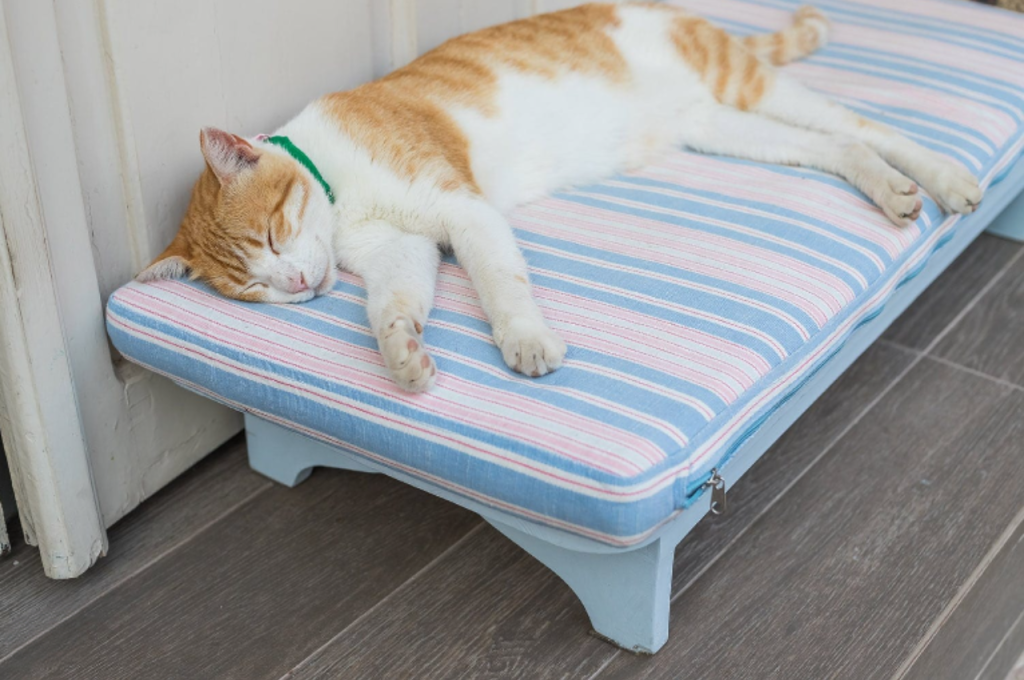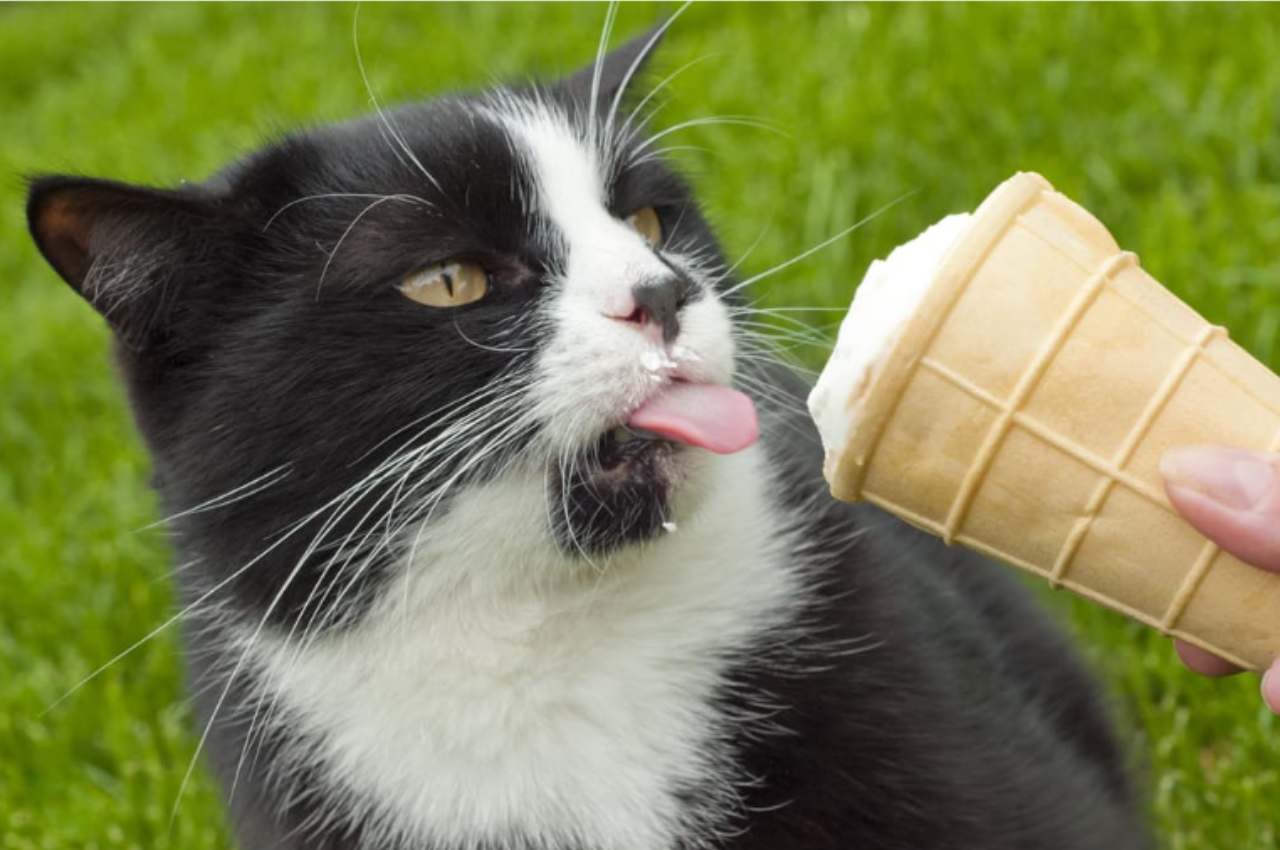Yes, cats should not be given ice cream because most cats are lactose intolerant. While cats may seem to enjoy the taste of ice cream, it is not safe for them to consume.
The majority of cats are lactose intolerant, meaning they cannot properly digest dairy products like ice cream. Feeding your cat ice cream can lead to gastrointestinal discomfort, including diarrhea an0d stomach upset. If you want to treat your feline friend, there are special cat-friendly frozen treats available that are formulated to be safe and enjoyable for them.
Remember to always consult with your veterinarian before introducing any new foods to your cat’s diet to ensure their health and well-being.
Understanding Cats’ Dietary Requirements
Cats are unique creatures with specific dietary needs essential for their overall health and well-being. As obligate carnivores, cats have evolved to thrive on a diet primarily composed of animal-based proteins and fats. In this comprehensive guide, we’ll delve into the intricacies of cats’ dietary requirements, exploring their nutritional needs, feeding guidelines, and the importance of providing a balanced diet for optimal health.

Protein Needs
Cats necessitate a substantial intake of protein to support their overall health and growth. Ensuring they receive an adequate intake of protein is essential for maintaining their health and vitality.
Water Intake
Ensuring that cats maintain proper hydration levels is crucial for supporting their overall health and well-being. Adequate water intake is essential for facilitating various bodily functions, including digestion, circulation, and temperature regulation.
Essential Nutrients
Cats require a well-rounded diet abundant in essential nutrients such as vitamins and minerals to maintain optimal health.
Potential Risks of Feeding Ice Cream to Cats
Ice cream is a delightful treat enjoyed by many, especially during the warmer months. However, while it may be tempting to share a spoonful with your feline friend, it’s essential to understand the potential risks involved. In this article, we’ll explore the dangers of feeding ice cream to cats and why it’s best to avoid this indulgence altogether.
Lactose Intolerance
Cats are lactose intolerant due to their inability to digest lactose properly, leading to gastrointestinal distress.
Sugar Content
Ice cream containing high levels of sugar can contribute to weight gain and dental problems in cats if consumed regularly. It’s essential to avoid feeding ice cream to cats to maintain their overall health and well-being.
Artificial Ingredients
Ice cream containing artificial ingredients such as xylitol can pose a significant threat to the health of cats. It’s crucial to avoid feeding ice cream with such additives to prevent potential toxicity and ensure the safety of your feline companion.
Signs of Discomfort or Illness in Cats
Spotting signs of discomfort or illness in cats is crucial. If your feline friend is showing symptoms like vomiting or diarrhea after consuming ice cream, it’s best to avoid it altogether. Cats lack the necessary enzymes to digest dairy products effectively, leading to potential stomach upset or worse.
Digestive Issues
Cats are known for their sensitive stomachs, and consuming certain foods can cause digestive issues. When it comes to ice cream, the high milk content and the presence of lactose can be problematic for many feline friends. Lactose is the sugar found in milk, and most adult cats are lactose-intolerant. This means that their bodies lack the enzymes needed to properly digest lactose. When a cat consumes ice cream, it can lead to digestive problems such as bloating, gas, and stomach discomfort.
Vomiting
One common sign of discomfort or illness in cats after eating ice cream is vomiting. The richness of ice cream combined with lactose intolerance can lead to an upset stomach and cause a cat to vomit. If your cat has ingested ice cream and begins to vomit shortly after, it is a clear indicator that their body is not able to handle this treat. It is important to note that vomiting can also occur due to other underlying health issues, so if the vomiting persists or becomes severe, it is best to seek veterinary care.
Diarrhea
Another digestive issue that cats may experience after consuming ice cream is diarrhea. The high sugar content, lactose, and fat in ice cream can disrupt their digestive system and result in loose stools. Diarrhea can be uncomfortable for cats and may also lead to dehydration if it persists. If your cat develops diarrhea after indulging in ice cream, it is crucial to monitor their symptoms and consult with a veterinarian if it does not resolve within a day or becomes severe.
Alternatives to Ice Cream for Cats
Cats are often known to have a sweet tooth, but can they have ice cream? While it might seem harmless to share a spoonful of your favorite treat with your feline friend, ice cream is not recommended for cats. Cats, like humans, can be lactose intolerant, and the high sugar content in ice cream can lead to digestive issues and obesity in cats.

Frozen Treats for Cats
Thankfully, there are plenty of safe and enjoyable alternatives to ice cream that you can treat your cat to. Frozen treats designed specifically for cats are available in pet stores, with flavors like chicken or fish that are both delicious and safe for feline consumption. These treats are formulated to be low in lactose and sugar, ensuring your cat’s tummy stays happy.
Homemade Cat-friendly Ice Cream
If you prefer to make frozen treats for your cat at home, consider creating homemade cat-friendly ice cream. Using ingredients like pureed meat or tuna juice mixed with water and freezing them in small portions can create a tasty and safe treat for your cat. Additionally, you can blend a small amount of plain, lactose-free yogurt with pureed fruits like bananas or blueberries for a refreshing and cat-friendly dessert.
Tips for Introducing New Treats to Cats
When it comes to pampering our beloved feline friends, it’s natural to want to treat them to special indulgences such as ice cream. However, it’s important to consider their dietary needs and restrictions before introducing any new treats. Here are some helpful tips for introducing new treats to cats.
Gradual Transition
When introducing a new treat like ice cream to your cat, it’s important to do so gradually. Start by offering a small amount to gauge your cat’s reaction and monitor for any signs of digestive upset. Gradually increase the portion size over time, allowing your cat’s digestive system to adjust to the new treat.
Moderation
Moderation is key when it comes to treating your cat to ice cream or any other indulgence. While a small amount of ice cream may not cause immediate harm, overindulgence can lead to health issues such as obesity and digestive upset. Be sure to limit the frequency and portion size of ice cream treats for your cat.
How to Keep Cats Cool in Hot Weather
It’s important to take extra care of your beloved feline friends during the scorching hot summer months. Cats, like humans, can suffer from heatstroke and dehydration if not properly cooled down. Fortunately, there are several simple steps you can take to keep your furry companion cool and comfortable. Keep reading to discover how you can ensure your cat stays safe and beat the heat this summer.
Plenty of Fresh Water
Water is essential for cats to stay cool and hydrated, especially when the temperature soars. Make sure your feline friend has constant access to fresh, clean water at all times. You can encourage your cat to drink more by placing multiple water bowls around the house and ensuring they are always filled. Consider investing in a pet water fountain, as the flowing water is often more enticing to cats. Remember to change the water frequently to prevent any contamination.
Shady Areas
Just like us, cats like to seek refuge in shady spots when it gets too hot outside. Ensure your cat has access to cool and shady areas in your home. This can include designated rooms with blinds or curtains drawn, or simply placing your cat’s bed or blankets in a cool corner away from direct sunlight. If your cat enjoys spending time outdoors, create shaded areas in your yard using umbrellas, canopies, or even special cat tents.
Cooling Mats
Cooling mats are an effective way to help your cat beat the heat during sweltering days. These specially designed mats use cooling gel or other materials to provide a comfortable and refreshing surface for your cat to lie on. Simply place the cooling mat in your cat’s favorite chilling spot, whether it’s on the floor or in their bed. Ensure you choose a mat that is safe for pets and can withstand scratching or biting.

Frequently Asked Questions for Can Cats Have Ice Cream?
Frequently Asked Questions: Can Cats Have Ice-Cream
Q. Can Cays have ice cream?
Eating ice cream can be harmful to cats as they are lactose intolerant, and consuming dairy products can lead to digestive issues such as diarrhea and stomach upset. Furthermore, the sugar content in ice cream is not suitable for cats, and some ingredients like chocolate or xylitol can be toxic to them.
Q. What are safe alternatives to ice cream for cats?
If you want to treat your cat, consider offering them a small amount of plain, unsweetened yogurt as a safer alternative to ice cream. Another option is to freeze small pieces of tuna or chicken broth as a refreshing and cat-friendly snack during hot days.
Q. How can I tell my cat is lactose intolerant?
Lactose intolerance in cats can lead to symptoms like diarrhea, vomiting, and gas after consuming dairy products. If you notice these signs after giving your cat ice cream or other dairy treats, it’s best to avoid feeding them such items in the future and consult your veterinarian for advice.
Conclusion
While it may seem tempting to treat your feline friend to a scoop of ice cream, it’s important to remember that cats are lactose intolerant. Consuming dairy products such as ice cream can lead to digestive upset and uncomfortable symptoms.
Instead, opt for cat-friendly alternatives such as specially formulated treats and snacks to keep your furry companion happy and healthy. Always consult with your veterinarian for appropriate dietary options for your cat.
